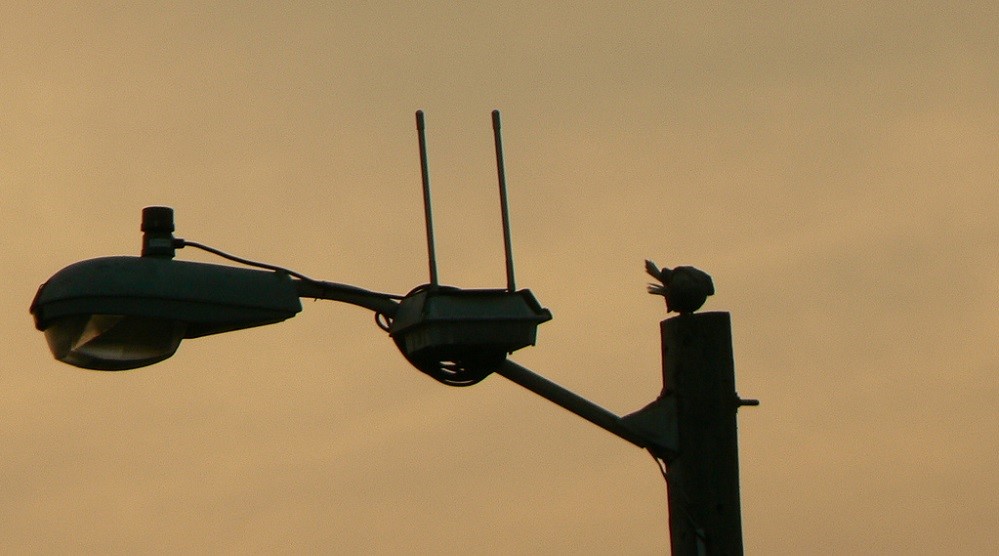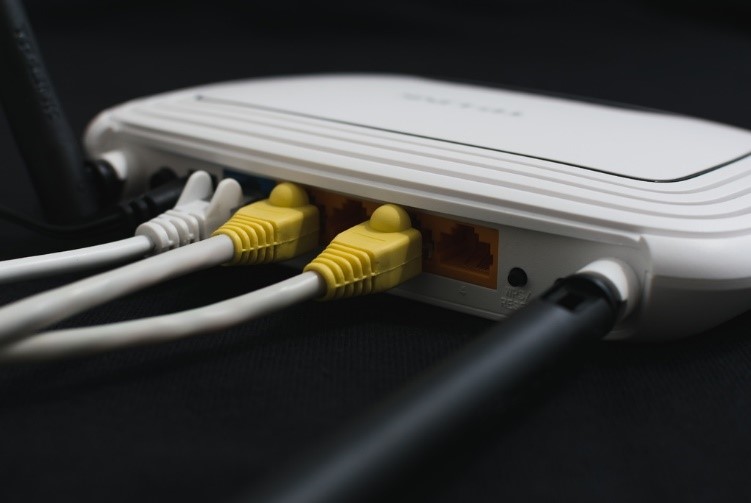"Expanded boundaries": 6 GHz band will give to the needs of Wi-Fi
The Federal Communications Commission ( FCC ) is considering an option to expand the frequency range used by Wi-Fi networks. It is proposed to allocate a frequency of 6 GHz to wireless networks.
Under the cut - about the reasons for this decision and the reaction of the community.

/ Flick / Terry Ross / CC
Now for Wi-Fi use frequencies of 2.4 and 5 GHz. In the 2.4 GHz band, it “ became cramped ” a few years ago . Despite the fact that the signal at 2.4 GHz is transmitted over long distances , and devices with its support are cheaper , companies such as Apple and Cisco recommended their customers to abandon 2.4 GHz in favor of 5 GHz.
At a frequency of 5 GHz, Wi-Fi is faster than 2.4 GHz: 1300 Mbit / s against 400–600 Mbit / s and offers 23 non-overlapping channels (instead of 3).
However, the 5-gigahertz range is also under threat of overload. according to forecastsWi-Fi Alliance and ABI Research, by 2020 almost 100% of Wi-Fi devices will use 5 GHz. An additional load on the network will create IoT-gadgets. There are a lot of IoT devices: their number will reach 75 billion by 2025.
The Federal Commission took note of this forecast and began to work out solutions to the problem. A possible way out of the situation would be to switch to 5.9 GHz, but 20 years ago, the United States had already given this band for the needs of ITS .
Therefore, the FCC drew attention to the 6 GHz band, which is partially used for satellite communications.
Thanks to the efforts of RKF Engineering Solutions with the support of Apple, Facebook, Google, Microsoft, Broadcom, Qualcomm and other major players, a study was released this January , the results of which show that using 6 GHz for Wi-Fi will not interfere with the communication channels of the mentioned satellites . This statement was confirmed in the Wi-Fi Alliance.
After the study was submitted by the FCC, one of the commission members, Michael O'Rielly (Michael O'Rielly), said that they would prepare a formal notice of the use of 6 GHz for Wi-Fi this summer. However, Ajit Pie postponed the decision until the fall.

/ PxHere / the PD
Large IT corporations, including Apple, Facebook, Google, Microsoft, Broadcom and Qualcomm, support the FCC initiative. Representatives of the companies note that the 6 GHz range will enable ultra-HD streaming and virtual and augmented reality projects.
The fears expressed only representatives of the Coalition of fixed wireless communication (Fixed Wireless Communications Coalition, FWCC) and the National Spectrum Management Association (National Spectrum Management Association, NSMA) . They fear that the use of the 6 GHz band for Wi-Fi will adversely affect the operation of fixed communication channels.
However, tech corporations assurethat will prevent interference prevention. Among them: the limited data transfer capacity, dynamic frequency selection ( the DFS ), the restriction factor of antenna gain, and other methods (full list of which can be found in p.3.2.4 on str.27-28 RKF Engineering Solutions research ).
The FCC will issue an appropriate report and order based on feedback from the community. If everything goes smoothly, you can use 6 GHz for Wi-Fi by the end of 2019.
By that time, IT giants have promised to release devices with 6 GHz support, while the IEEE plans to include 6 GHz in the 802.11ax specification . In addition, IEEE experts hope that by 2023, Wi-Fi will be available on these frequencies with increased bandwidth.
Disclaimer: we will tell you more about the technical details as the official documentation and reports of the FCC appear.
Materials on the topic from the corporate blog VAS Experts:
VAS Experts specializes in the introduction of services for managing and analyzing Internet traffic:
• SCAT DPI | IS SORM | BRAS | DLP systems | Our cases | Events | News •
Under the cut - about the reasons for this decision and the reaction of the community.

/ Flick / Terry Ross / CC
Why expand the frequency spectrum
Now for Wi-Fi use frequencies of 2.4 and 5 GHz. In the 2.4 GHz band, it “ became cramped ” a few years ago . Despite the fact that the signal at 2.4 GHz is transmitted over long distances , and devices with its support are cheaper , companies such as Apple and Cisco recommended their customers to abandon 2.4 GHz in favor of 5 GHz.
At a frequency of 5 GHz, Wi-Fi is faster than 2.4 GHz: 1300 Mbit / s against 400–600 Mbit / s and offers 23 non-overlapping channels (instead of 3).
However, the 5-gigahertz range is also under threat of overload. according to forecastsWi-Fi Alliance and ABI Research, by 2020 almost 100% of Wi-Fi devices will use 5 GHz. An additional load on the network will create IoT-gadgets. There are a lot of IoT devices: their number will reach 75 billion by 2025.
The Federal Commission took note of this forecast and began to work out solutions to the problem. A possible way out of the situation would be to switch to 5.9 GHz, but 20 years ago, the United States had already given this band for the needs of ITS .
Therefore, the FCC drew attention to the 6 GHz band, which is partially used for satellite communications.
Thanks to the efforts of RKF Engineering Solutions with the support of Apple, Facebook, Google, Microsoft, Broadcom, Qualcomm and other major players, a study was released this January , the results of which show that using 6 GHz for Wi-Fi will not interfere with the communication channels of the mentioned satellites . This statement was confirmed in the Wi-Fi Alliance.
After the study was submitted by the FCC, one of the commission members, Michael O'Rielly (Michael O'Rielly), said that they would prepare a formal notice of the use of 6 GHz for Wi-Fi this summer. However, Ajit Pie postponed the decision until the fall.

/ PxHere / the PD
What does the community think?
Large IT corporations, including Apple, Facebook, Google, Microsoft, Broadcom and Qualcomm, support the FCC initiative. Representatives of the companies note that the 6 GHz range will enable ultra-HD streaming and virtual and augmented reality projects.
The fears expressed only representatives of the Coalition of fixed wireless communication (Fixed Wireless Communications Coalition, FWCC) and the National Spectrum Management Association (National Spectrum Management Association, NSMA) . They fear that the use of the 6 GHz band for Wi-Fi will adversely affect the operation of fixed communication channels.
However, tech corporations assurethat will prevent interference prevention. Among them: the limited data transfer capacity, dynamic frequency selection ( the DFS ), the restriction factor of antenna gain, and other methods (full list of which can be found in p.3.2.4 on str.27-28 RKF Engineering Solutions research ).
What's next
The FCC will issue an appropriate report and order based on feedback from the community. If everything goes smoothly, you can use 6 GHz for Wi-Fi by the end of 2019.
By that time, IT giants have promised to release devices with 6 GHz support, while the IEEE plans to include 6 GHz in the 802.11ax specification . In addition, IEEE experts hope that by 2023, Wi-Fi will be available on these frequencies with increased bandwidth.
Disclaimer: we will tell you more about the technical details as the official documentation and reports of the FCC appear.
Materials on the topic from the corporate blog VAS Experts:
- How to provide free Wi-Fi and do not break the law
- Internet to the village - we are building a radio-relay Wi-Fi network
- Shot in the leg: critical errors in the construction of networks of telecom operators
- The future of carrier services: what does the client need?
VAS Experts specializes in the introduction of services for managing and analyzing Internet traffic:
• SCAT DPI | IS SORM | BRAS | DLP systems | Our cases | Events | News •
